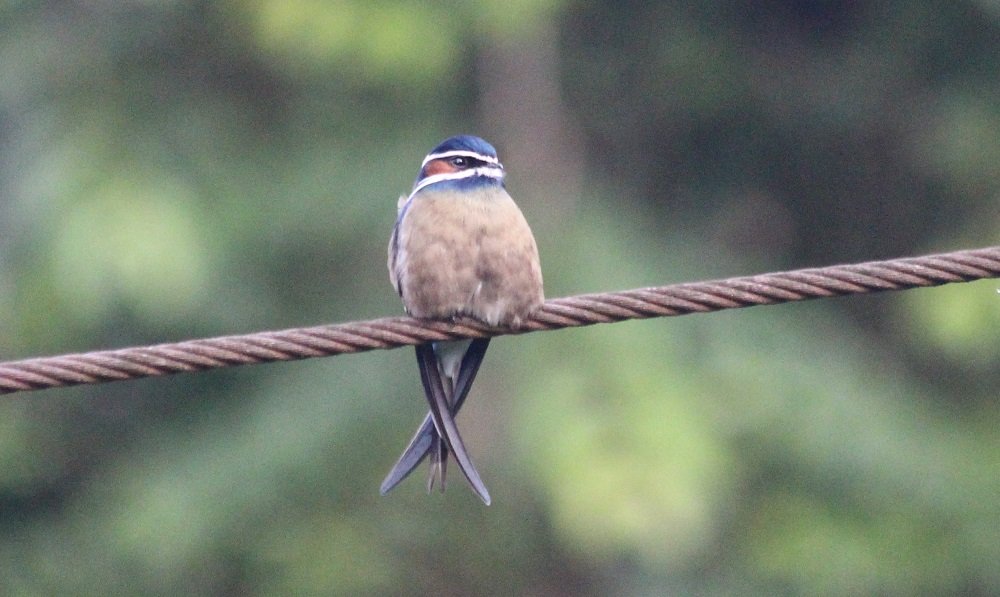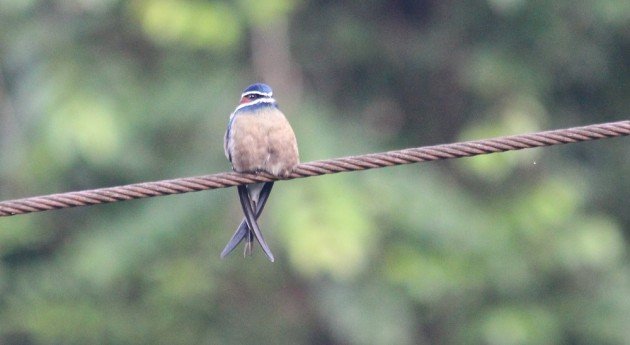
Treeswifts are funny little things. They’re swifts, only they aren’t, actually. When they were first described they were thought to be a link between the swallows and the swifts. Of course this is nonsense, and they are clearly close to swifts, but with a hind toe that lets them perch like a swallow, they sit outside the family as well, in their own, rarely thought about, family. There are four species in the family, ranging from India to the Solomon Islands. They are my newest family tick, when I picked up a Grey-rumped Treeswift flying high above Singapore Botanical Gardens in December last year.
To really get to know a treeswift, you want to get a look at one when its perching. In flight they basically look like just another swift, and I don’t find swifts particularly inspiring birds (needletails perhaps excepted). But treeswifts stand out when they are perched, and few are as special as the Whiskered Treeswift, which has a level of facial ornamentation you’d never find in the dull swifts. It’s a forest specialist, and hunts from a perch, which isn’t just unusual among the swifts (as in it never happens), it’s also unique within the family.
To really get the best view of a the Whiskered Treeswift, you want to see it from eye-level, rather than straining to get a look at the species in the canopy from the forest floor. The canopy walkway at Danum Valley (which I have mentioned before is the greatest birding spot ever and I really should write a full story on I know) is one such place to see this remarkable species up close, among with many other canopy species.
















Leave a Comment